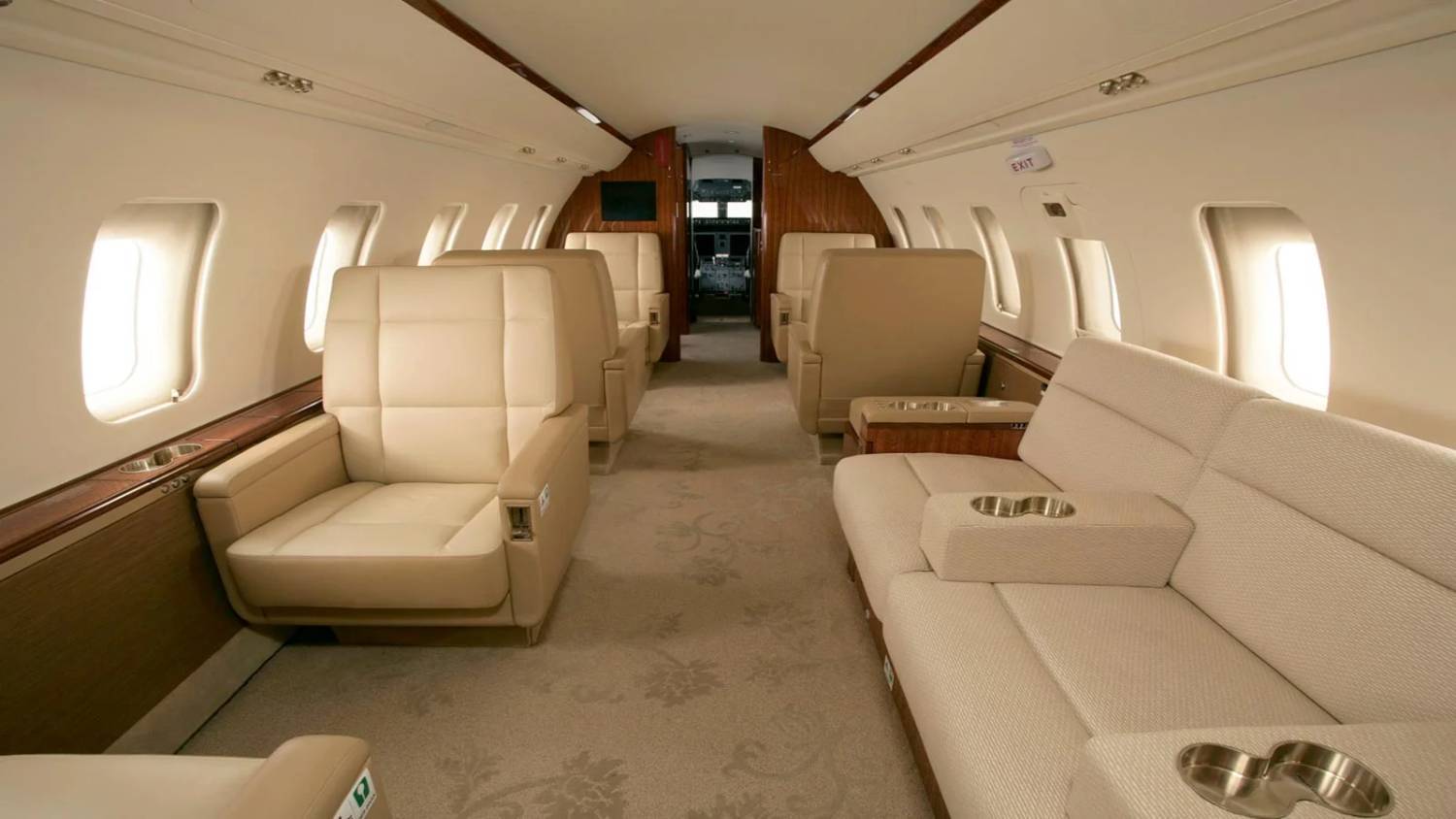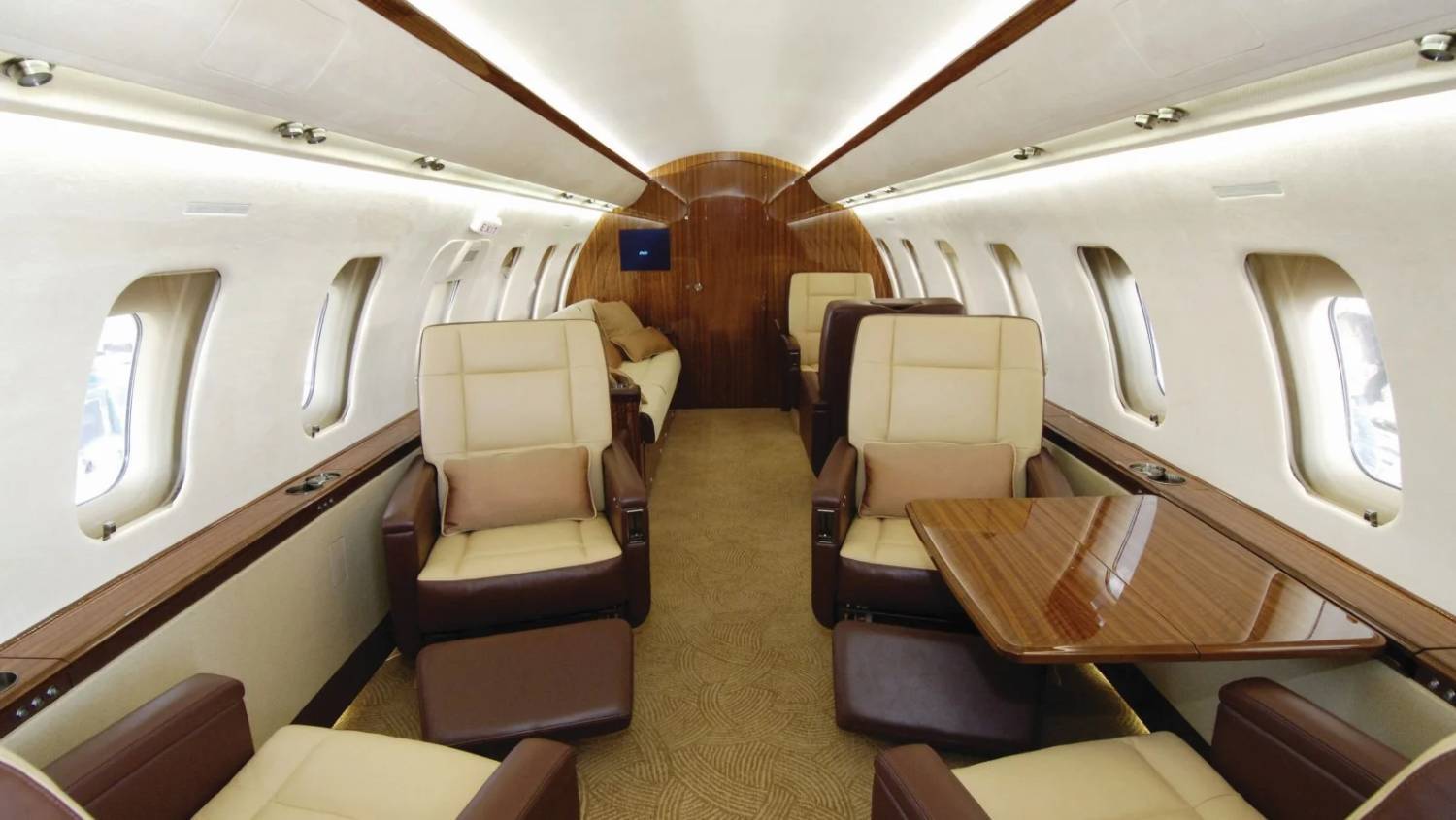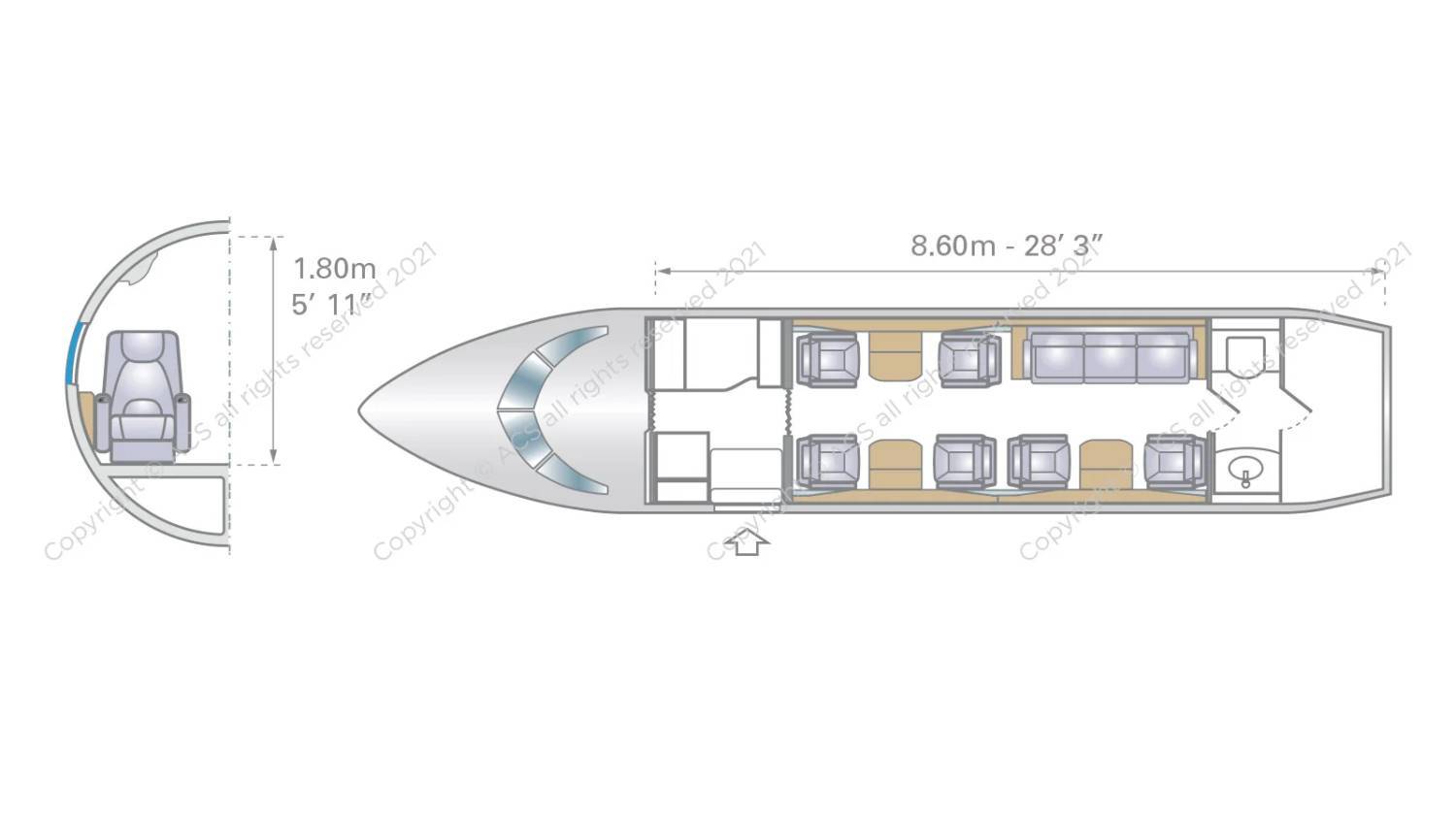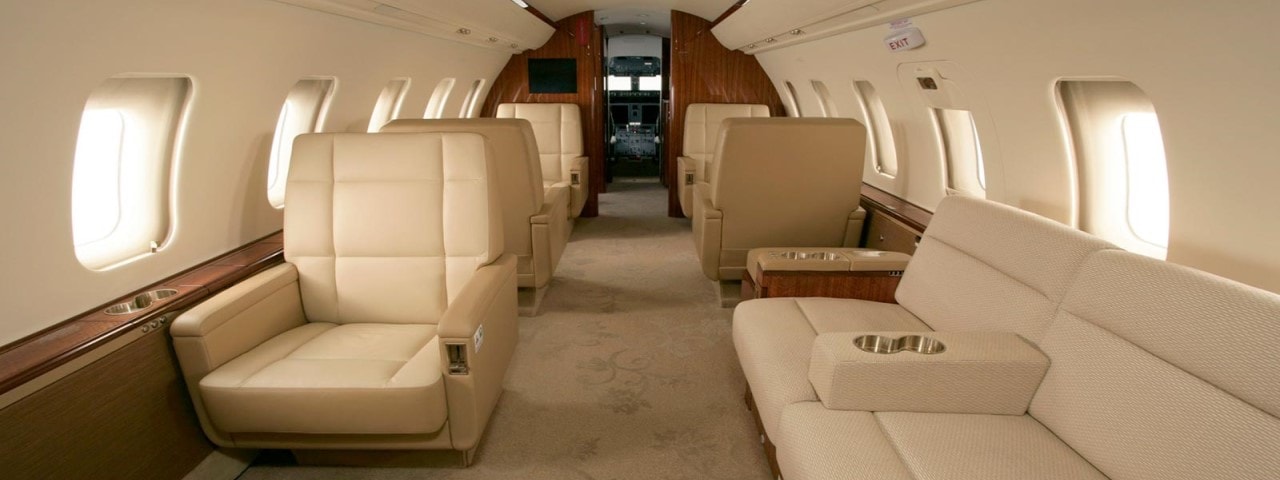




BOMBARDIER CHALLENGER 605
介紹
- Passengers 12
With one of the widest cabins in its class, the Bombardier Challenger 605 offers an exceptional flight experience for up to 12 passengers, along with a range that lets it cross oceans and continents with ease.
About this aircraft
- The Bombardier Challenger 605 was introduced to the public in 2006 as an updated variant of the 604. Production of the 605 ceased in 2016 after almost 300 deliveries.
- Carrying up to 12 passengers and flying for eight hours non-stop, the 605 is suitable for transatlantic charters without stopovers as well as short- and medium-haul flights.
- Accessible during the flight, the baggage compartment can hold 12 suitcases and several items of hand luggage.
- The Challenger 605 was replaced by the 650 in 2015.
With its spacious interior and impressive range, the Challenger 605 offers a luxurious onboard experience and is one of the most sophisticated private jets available today.
Interior design

The 605’s redesigned interior improved on the 604 by making the largest interior in its class even more spacious. Bombardier also introduced LEDs throughout for more atmospheric lighting and enlarged the windows to let in more natural light. There was also a new galley design, as well as increased storage capacity and more ergonomic working spaces.
Like the Challenger 604, the 605’s cabin can be configured into a 12-passenger conference space in a double-club, forward or half club, or divan arrangement. Depending on the configuration, the seating can be turned into five beds during the flight. Hot and cold food and drinks can be prepared in the galley at the front of the aircraft.
Below are two standard configurations found on board a Challenger 605.

Interesting facts to learn before you fly
- The Challenger 605’s seats can be used to make five beds mid-flight (if originally configured to fly 12), making the aircraft ideal for night flights.
- The cabin is almost two feet wider than on an Embraer Legacy 600 – a competitor in the heavy jet class.
- The 605 can make steep approaches relative to its size and fly in/out of airports such as London City.
- Upgrades from the 604 include more natural light, larger LCD video monitors, improved work tables, new acoustical insulation reducing interior noise and improvements to the cabin electronic system. The lavatory also received an uplift.
Technological features
Two General Electric CF34-3B engines power the Bombardier Challenger 605, each offering 8,729 lbs of thrust and using 976 litres of fuel per hour.
The cockpit features a Collins Proline21 avionics suite, giving pilots instant and intuitive access to critical flight information, along with several LCD screens. An entirely digital system gives passengers increased cabin control, with touch-screen controls in the VIP areas and galley allowing for on-demand audio/video and high-speed internet connectivity.
History
Following the success of the Challenger 604, Bombardier retained its most popular features and brought the aircraft into the modern-day with a host of internal upgrades. Released in 2006, the 605 has larger windows that let in 30% more natural light, bigger LCD monitors, improved work tables, more cabin lighting, new acoustical insulation and an improved cabin electronic system. There’s also more storage space in the galley and an upgraded lavatory.
After nearly 300 deliveries, Bombardier ceased production of the 605 in 2015 and replaced it with the 650, which has a redesigned cabin and improved avionics.
Manufacturer
Canadair was created as a separate entity by the government of Canada on the 11th of November 1944, absorbing the operations of the Canadian Vickers company and initially producing flying boats for the Royal Canadian Air Force. In 1952, Canadair was merged with the American Electric Boat Company to form General Dynamics and two years later, when the purchase of Convair was confirmed, became Convair’s Canadian subsidiary.
During the 1950s, Canadair developed and produced the successful Tutor trainer aircraft. The following decade saw the design and production of amphibious aircraft, primarily to provide a more effective way of delivering water to forest fires. Further development led to aircraft ideal for performing a range of roles, including air-sea search and rescue, cargo haulage and carrying passengers, in addition to the water bomber mission.
The Challenger 600 was perhaps the company’s most commercially successful product. However, the high cost of developing the aircraft and slow initial sales of the Challenger heavily contributed to the near-bankruptcy of Canadair, which was only avoided through the purchase of the company by Bombardier in 1986.
Now, Bombardier is a global leader in the transportation industry, creating innovative and original aircraft and trains. Its products and services provide world-class transportation experiences that set new standards in passenger comfort, energy efficiency, reliability and safety. Headquartered in Montreal, Canada, Bombardier has production and engineering sites in 25 countries across Transportation, Business Aircraft, Commercial Aircraft and Aerostructures and Engineering Services.
Cost
A new Bombardier Challenger 605 can cost as much as $27m (USD), while older aircraft sell for around $15m.
Charter rates
Charter rates for the Bombardier Challenger 605 can vary greatly depending on the length of the journey you have planned, as well as the airports you decide to fly in and out of.
Wet lease rates
ACMI (aircraft, crew, maintenance, insurance) wet lease rates for the Bombardier Challenger 605 vary depending on the age of the aircraft, length of the lease term, the number of block hours being guaranteed and the average cycle ratio.
Key Details
•Aircraft Type: Heavy Jet
•Passengers: Up to 12
•Cruise Speed: 870 KM/H (541 MPH)
•Range: 7400 KM (4598 Miles)
Specifications:
•Luggage Space: 116 ft³
•Enclosed Lavatory: Yes
•Flight Attendant: Yes
•Pressurised Cabin: Yes
條款及細則
Terms and Conditions for Private Aircraft Charter
1.Cancellation and Refund Policy
Once the booking is confirmed, all orders are non-cancellable and non-refundable. Please ensure all travel arrangements are carefully reviewed before making a reservation.
2.Flight Schedule Changes
Requests to change flight times or destinations must be submitted at least 48 hours in advance and are subject to aircraft and crew availability. Changes may incur additional charges.
3.Flight Delays and Cancellations
In the event of delays or cancellations caused by weather, technical issues, or other force majeure events, we will make every effort to reschedule the flight but will not be liable for any additional costs or compensation.
4.Crew Arrangements
All flights are operated by professional crew members. Crew assignments are determined by the company and cannot be changed or adjusted based on passenger requests.
5.Baggage Restrictions
Each aircraft has specific baggage weight and size limits. Please confirm baggage requirements at the time of booking. Excess baggage may incur additional charges or be refused for transport.
6.Passenger Safety and Conduct
All passengers must comply with the instructions of the crew. The company reserves the right to refuse service to passengers who violate safety regulations or disrupt the experience of others.
7.Flight Time and Overtime Charges
If the flight exceeds the scheduled duration, additional charges may apply. These charges will be calculated based on the aircraft type and the length of the delay.
8.Force Majeure
In the event of natural disasters, political unrest, or other force majeure events that prevent the flight from operating as scheduled, we will make every effort to reschedule the flight but will not be responsible for additional costs or liabilities.


